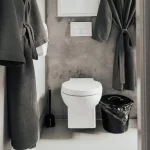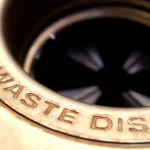It’s not always easy to identify water leaks. Often, the only sign that you might have a leaky basement is the smell of mildew that pervades the room at the bottom of the stairs. When that happens, you need to play detective and search for any indication that you have the following symptoms:
Foundation Overflow
This type of leak usually makes its appearance at the top of your basement wall. As the foundations overflow the water enters the basement area and runs down the walls to the floor. Instead of hunting around at lower levels looking for the leak, check the walls for signs of moisture. This can be caused by inadequately sealed structures such as the porch or patio, or by water pooling around the foundations.
Wall Cracks
Cracks in the wall are the most common way for water to enter a leaky basement. Sometimes it isn’t the presence of water that is the problem, but the existence of the crack that allows in rainwater, groundwater, and water from melting ice and snow in winter. Your plumber can identify moisture-filled wall cracks with an infra-red test to detect temperature differences in the wall. You should note that sealing the crack might not be the solution if the presence of water is caused by inadequate drainage or overflowing systems.
Pools of Water
When you find pools of water collecting on your basement floor and no sign of how it is coming in, it’s a reasonably sure sign that you might have excess water under the slab. Apart from the obvious problems with mold and odors, this can cause an increase in the hydrostatic pressure that could eventually result in structural problems.
Undrained Window Wells
The wells around basement egress windows are prime suspects for poor drainage, and if you’ve spent money on a finished basement the last thing you need is water running down inside the walls. If you find moisture collecting around the windows or on the floor at the base of the wall below the windows, then this should be your first place to look. Weeping tiles are often installed for drainage at the windows, and these may not be working properly or the drain could be clogged up with dead leaves and other debris.
Negative Grading
Even if your basement appears to be ship-shape if your yard slopes towards the foundations of the home you should check to see if there’s a chance of water entering the basement. There are lots of reasons why homes are built with a negative grading, which causes the water pool near the foundation and cause leaky basement problems.
Busy Sump Pump
Sump pumps are intended to keep your basement dry during a flood, but if your pump is running constantly it could be an indication that you have a bigger drainage problem than the odd overflow that most pumps are designed to handle. Pumps that run frequently may need additional servicing to keep them operating effectively, or installing a heavy-duty pump with a battery back-up might be a solution to the problem.
“Band-aid” repairs aren’t the solution to a leaky basement. To really solve the problem, you need to identify the main cause and address it head-on.






